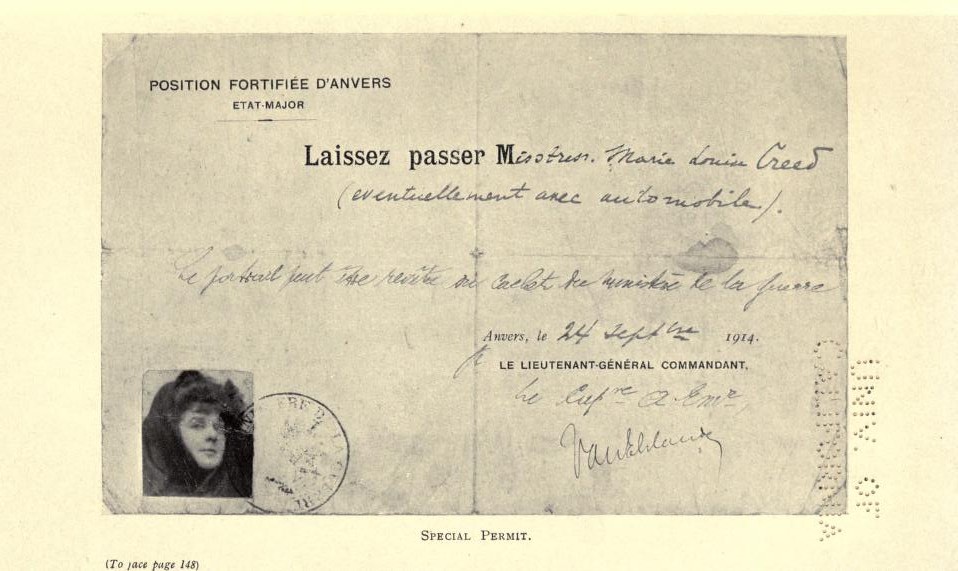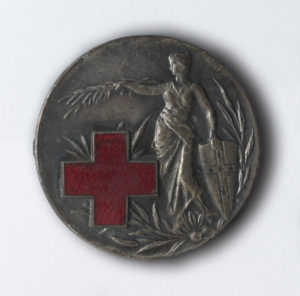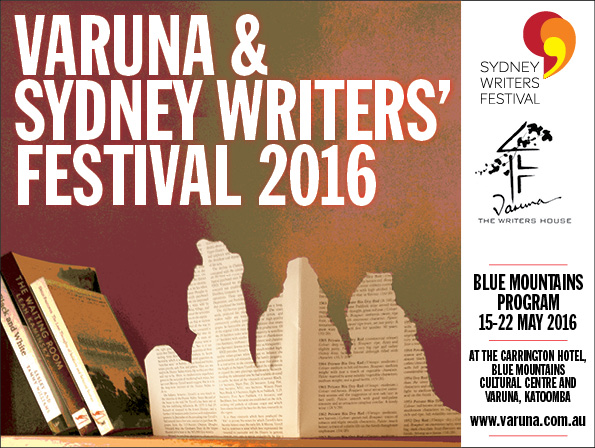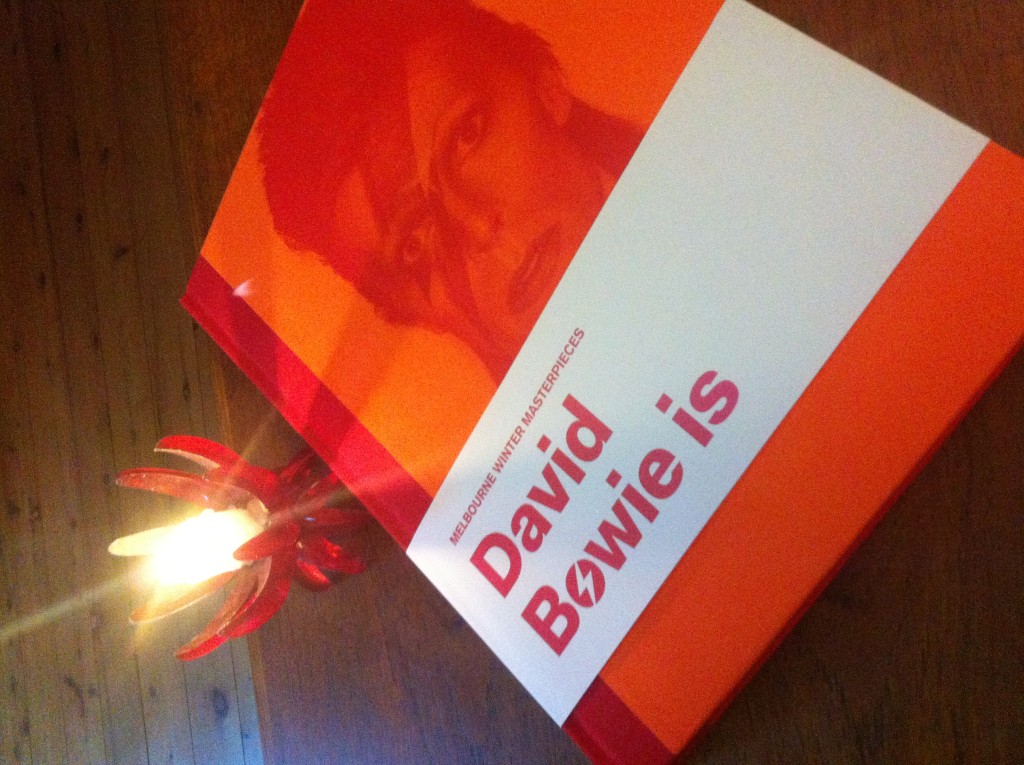This year’s Speaker Connect programme for History Week has the theme of Neighbours and I am trying to think of something I have worked on that might make a substantial presentation but I am stumped. In the meantime, as it’s election time, my current-day neighbourhood is always good for a laugh. The defacing of my Liberal-voting neighbour’s corflutes with some very silly symbols has led to media interest!
All posts by Naomi Parry
Little treasures
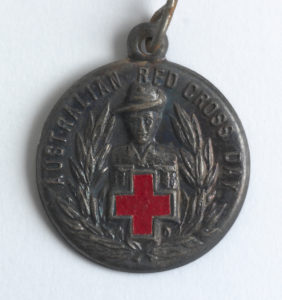
Archival research is one of the best things about being a historian. Although it usually involves inhumane levels of reading on microfilm, every now and again we get to don gloves and rifle through piles of old letters. Most of the archival material I’ve looked at for NSW and the Great War is old and little-used so remains in its original bundles. And sometimes those bundles contain tiny, overlooked objects.
These are badges, made as samples by WJ Amor of Amor Ltd, Newcastle, for Australia Day on 26 April 1918. They were tucked into one of the Colonial Secretary’s Special Bundles (NRS 906, Australia Day Red Cross Appeal, 5/5341.1) and were in amongst letters about race meetings, fund-raising and other issues that mattered on the day when the whole country stopped to raise money for the Australian Red Cross Society to help Australian soldiers. When I found them I was very excited – an excitement shared by my colleagues in State Records NSW, which owns these little treasures.
During the Great War ‘Australia Day’ was a day of pageantry and fund-raising that had nothing to do with the arrival of the First Fleet. Dreamed up by a Manly woman, Mrs Ellen Wharton-Kirke, who had four sons at the front and wanted to raise money for the Australian Red Cross Society, the concept was taken over by the NSW Government, who got expatriate American theatre entrepreneur Hugh Ward to organise it. It ended up being a nationwide event, was a roaring success, and became a feature of the fund-raising calendar from 1915 to 1918.
I like to think these little badges were made and adorned the patriotic breasts of Australians on 26 April 1918. I wonder if anyone has one?
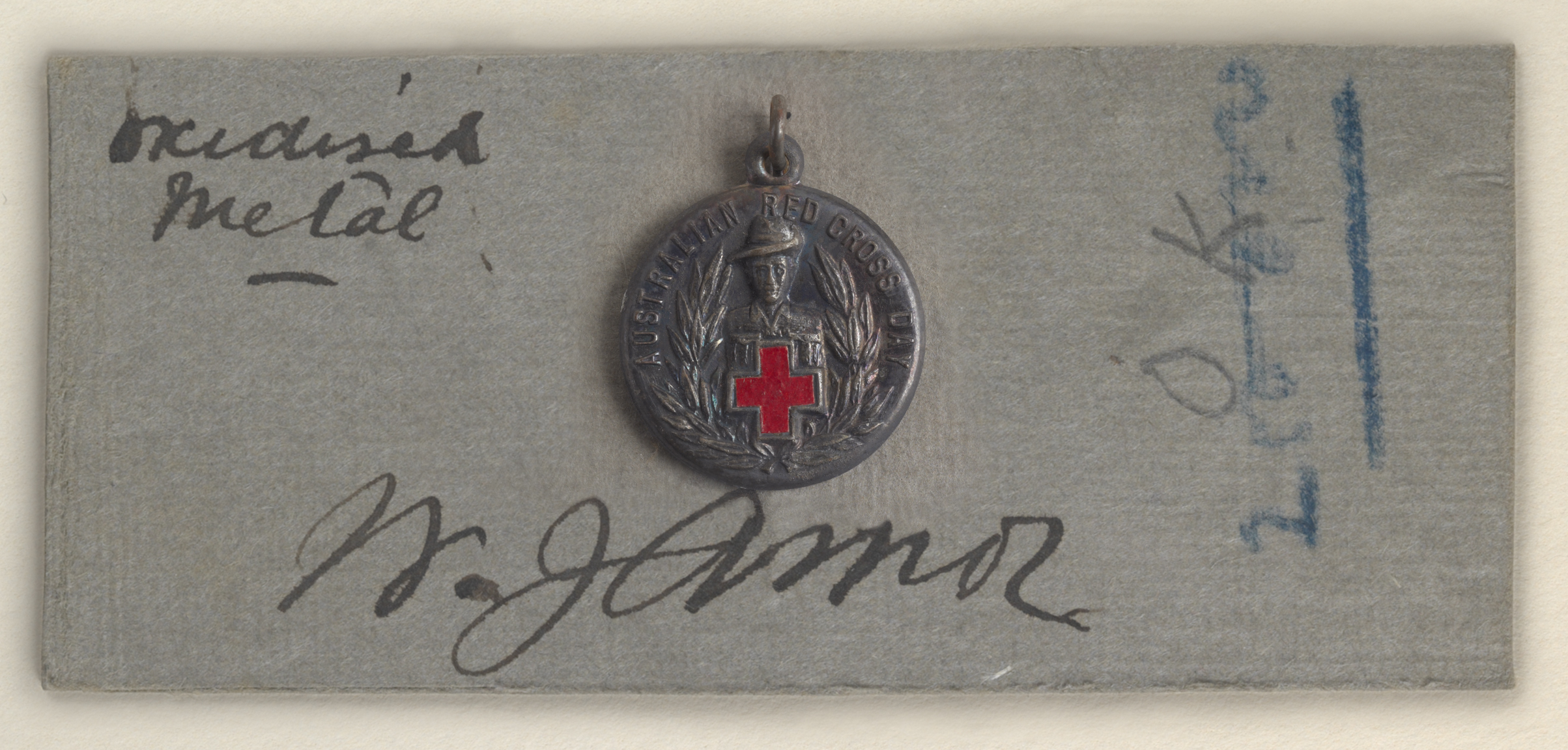
My favourite place, Lockleys Pylon
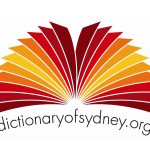 I’ve written a new piece for The Dictionary of Sydney on my favourite walk in the Blue Mountains, the path to Lockleys Pylon. It’s part of the lovely Blue Mountains Icons Project, which has been supported by Blue Mountains City of the Arts Grants and Varuna, the National Writers House. This project supported the writing of essays by John Low on Darwin’s Walk, Mark O’Flynn on Varuna, Julian Leatherdale on the Hydro Majestic and my dear friend Delia Falconer on Echo Point. It’s a privilege to be in company with such distinguished authors, and I’m looking forward to talking about the project with them and the City Historian, Dr Lisa Murray, at Varuna’s Writer’s Festival event on Monday 16 May.
I’ve written a new piece for The Dictionary of Sydney on my favourite walk in the Blue Mountains, the path to Lockleys Pylon. It’s part of the lovely Blue Mountains Icons Project, which has been supported by Blue Mountains City of the Arts Grants and Varuna, the National Writers House. This project supported the writing of essays by John Low on Darwin’s Walk, Mark O’Flynn on Varuna, Julian Leatherdale on the Hydro Majestic and my dear friend Delia Falconer on Echo Point. It’s a privilege to be in company with such distinguished authors, and I’m looking forward to talking about the project with them and the City Historian, Dr Lisa Murray, at Varuna’s Writer’s Festival event on Monday 16 May.
Quick thoughts on writers’ block

I’ve been tangled up writing about home front dissent during the Great War – the peace movement, the International Workers of the World, socialists, feminists and other anti-conscriptionists, and I’ve been thinking about what it is that leads one to get tangled up, as I have at various stages as I work through the drafts of NSW and the Great War.
Here’s what I think. It’s hardest to write about things we know best or feel the most strongly about. How to cover all that we know and love in just a few words? But these are the words we really must write. We spur ourselves on, telling ourselves that no one else can talk about these things the way we can, that it is a duty and a mission, and end up putting so much pressure on ourselves we can barely breathe. Creating is hard, because you are constantly staring at the gulf between what you want it to be, what it needs to be, and what it currently is. The joy comes when you manage to cast a slender rope over that gulf, and start to think you might have the beginnings of a swing bridge and that, one day, you’ll let people walk along it.
Sydney Writer’s Festival Varuna Programme
It’s pretty exciting to be able to announce that I’m going to be on Varuna’s programme for the 2016 Sydney Writer’s Festival. With Delia Falconer, John Low, Julian Leatherdale and Mark O’Flynn, I was selected to write a piece for the Dictionary of Sydney and Varuna on Blue Mountains icons, as part of a Blue Mountains City of the Arts project. We’ve all been fellows of Varuna at one time and another and it’s been a big part of my life so it’s lovely to be able to do this.
I’ll be able to tell link to the piece when it’s published on The Dictionary of Sydney but I hope you’ll come and see us speak. I’ll be at the Carrington Hotel on Monday, 16 May, at 3pm. We’ll be there with the likes of Magda Szubanski, Tegan Bennett-Daylight, Charlotte Wood and Mireille Juchau if you need more reasons to go!
Art versus history, and vice versa
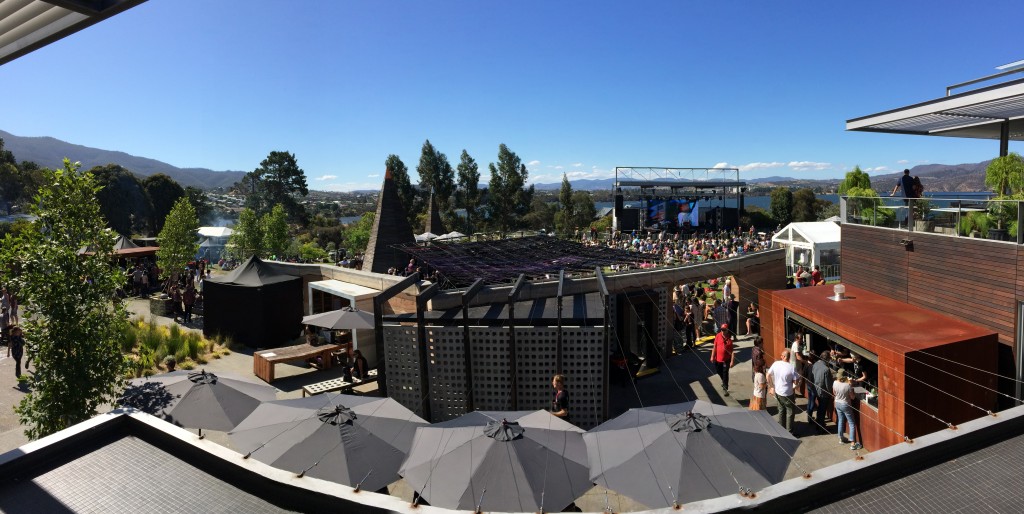 This weekend I’ve been at home, in Hobart, and at something new(ish), which is MONA. The annual MONA Foma festival (MoFo) is entirely located at the site of the gallery this year, which means some of the transformative power of its former location in the middle of Hobart city is lost. Overall, mMoFo is low-key, quiet, attenuated because it now sprawls over the whole site and because the lineup this year is a tad obtuse. What I’ve seen has been good but you do get considerably bigger bang for your buck at mainland festivals like our very own Blue Mountains Music Festival. The MoFo App is dreadful (no cross-referencing) and I’ll be writing to suggest they copy the Sydney Film Festival’s app, which is a delight, as well as their ticketing system. I enjoyed the SA Theatre Co’s Beckett mightily though – if enjoy is the right word.
This weekend I’ve been at home, in Hobart, and at something new(ish), which is MONA. The annual MONA Foma festival (MoFo) is entirely located at the site of the gallery this year, which means some of the transformative power of its former location in the middle of Hobart city is lost. Overall, mMoFo is low-key, quiet, attenuated because it now sprawls over the whole site and because the lineup this year is a tad obtuse. What I’ve seen has been good but you do get considerably bigger bang for your buck at mainland festivals like our very own Blue Mountains Music Festival. The MoFo App is dreadful (no cross-referencing) and I’ll be writing to suggest they copy the Sydney Film Festival’s app, which is a delight, as well as their ticketing system. I enjoyed the SA Theatre Co’s Beckett mightily though – if enjoy is the right word.
Still, I’m home and with my dearest friends. Had a great stay down south that culminated in finding the author of a Great War diary my dear girlfriend Sue, collector extraordinaire, had scavenged from the South Hobart tip. Via Facebook she was alerted to a picture of the author and what a cheeky cove he was. It’s never long enough here.
And while at MONA, a chance to think about art versus archaeology, and art versus history. Gilbert and George, cheeky critics of social mores, old, new and future. 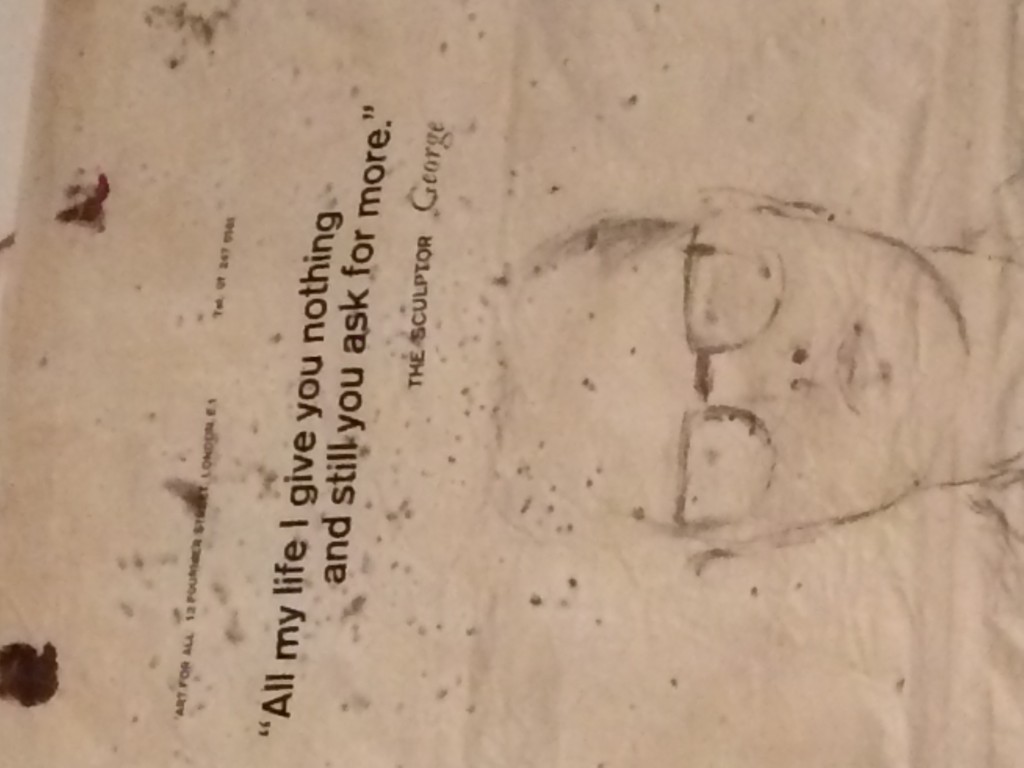 A giant installation of books formed by lead leaves and glass bindings – which makes me think I’d much rather read the archaeology and built heritage of, say, the Pasminco Zinc Refinery than a constructed piece. Then a piece on Hiroshima that recollected archive boxes and got me, but of course you couldn’t touch it and what use are archives you can’t touch? When boxes evoke things lost, as they did in the show today, I can get it, but tell a historian to keep their hands off it and you’ll get a very erudite tantrum. Then again, perhaps my son is right to say, if you let everyone touch archives they will be destroyed. Oh yes, but I am not anyone.
A giant installation of books formed by lead leaves and glass bindings – which makes me think I’d much rather read the archaeology and built heritage of, say, the Pasminco Zinc Refinery than a constructed piece. Then a piece on Hiroshima that recollected archive boxes and got me, but of course you couldn’t touch it and what use are archives you can’t touch? When boxes evoke things lost, as they did in the show today, I can get it, but tell a historian to keep their hands off it and you’ll get a very erudite tantrum. Then again, perhaps my son is right to say, if you let everyone touch archives they will be destroyed. Oh yes, but I am not anyone.
This is also the week David Bowie died. An archivist (of himself), a songster, a historian (of himself), a storyteller magician, a Black Star. Vale and RIP.
The end of 2015
I’m really looking forward to the New Year. This last one, 2015, was hard, although it had its riches. Too many changes, brutish and unexpected, although not all of them were bad. Friends filled up and warmed what might have been a cold space, my house and Katoomba became my home again, and my son and I grew even closer. Most of the time I felt as precariously balanced as the stones at the top of this pylon, but I made it. And I did some cool things – I saw whales, watched Sylvie Guillem dance her last performance in Sydney and Lucinda Williams rock out at the Enmore, danced with my kid at the 40th anniversary of The Rocky Horror Picture Show and went to a disco, bought funky furniture and enjoyed being social again. Although the bad bits were very bad, it wasn’t all like that. Onward.
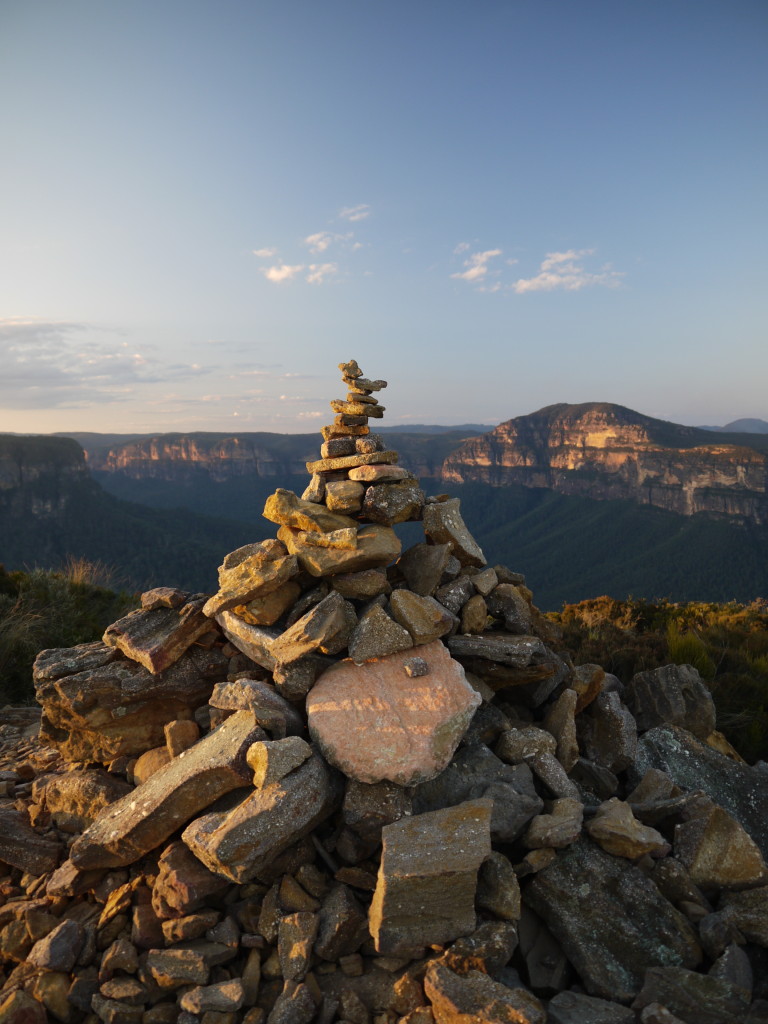
We will remember
It is Remembrance Day so I shall be thinking about the men and women who have, for complicated and varied reasons, served this country in overseas conflicts over the last 116 years. I will also be thinking of the wars that continue around this world, for reasons only the powerful know, and the people displaced by them, including those who have tried to stagger to our shores. I will remember.
And it’s a day to reflect on the titanic struggles of Gough Whitlam and Malcolm Fraser. Gough was a WWII RAAF veteran who brought our conscripts home from Vietnam. Fraser was a child of wartime who threw our country’s borders open to refugees from that conflict. I’ll remember that too.
Flight in the 20th century
Flying machines only properly got off the ground in 1903 so they really are a defining invention of the 20th century. It’s a sad fact that, before an aeroplane had even been flown in Australia, the Commonwealth Government offered a prize for the first person who could invent one for military purposes. Our WWI pilots flew French and British planes, as it turned out.
This is a gorgeous 1914 picture of the first seaplane in Australia which was imported by Lebbeus Hordern and piloted by Maurice Gillaux, a dashing French acrobatic aviator who would die in 1917, doing test flights for the French military. I love this – the old technology stands behind the new but they are both just canvas and sticks. You wouldn’t have gotten me up in one of those for quids, but people took them into battle, against Zeppelins and guns and other planes! I guess war is the best place for nuttersdaredevils.

Louise Mack, World War One war correspondent

Well before CEW Bean and Keith Murdoch slugged it out to become Australia’s Official War Correspondent and Bean got on the boat with the first AIF, this journalist was sheltering in Antwerp while the Germans overran it. Meet Louise Mack (Mrs Creed), who was paid by the London Evening News and wired stories of the Siege of Antwerp and German atrocities to Australian papers. Born in Hobart and raised in Sydney she was stationed in Europe at the time, living in England and Italy before heading to Belgium to write for the Evening News and The Daily Mail. She also wrote romance novels.
In 1915 she published a book about her experiences, called A Woman’s Experiences in the Great War and she had a mighty lively tone. Here she is, describing arriving in Belgium and meeting a fellow correspondent mansplainer.
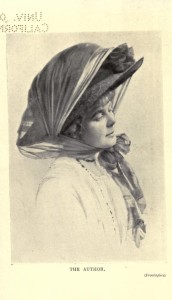
“My orders are,” Mr. Frank Fox told me as we chatted away, “to stick it out. Whatever happens, I’ve got to see it through for the Morning Post.”
“And I’m going to see it through, too,” I said.
“Oh no!” said Mr. Fox. “You’ll have to go as soon as trouble threatens!”
“Shall I?” I thought.
But as he was a man and an Australian, I did not think it was worth while arguing the matter with him. Instead, we talked of Sydney, and old friends across the seas, the Blue mountains, and the Bush, and our poets and writers and painters and politicians, friends of long ago, forgetting for the moment that we were chatting as it were on the edge of a crater.”
